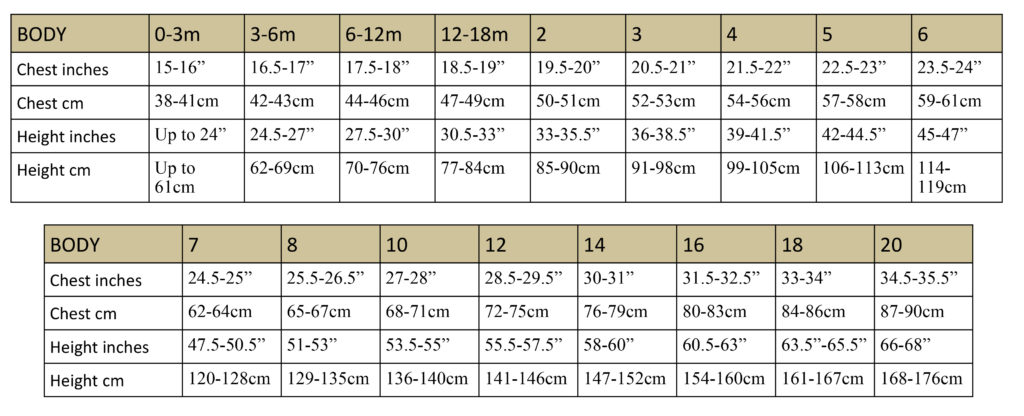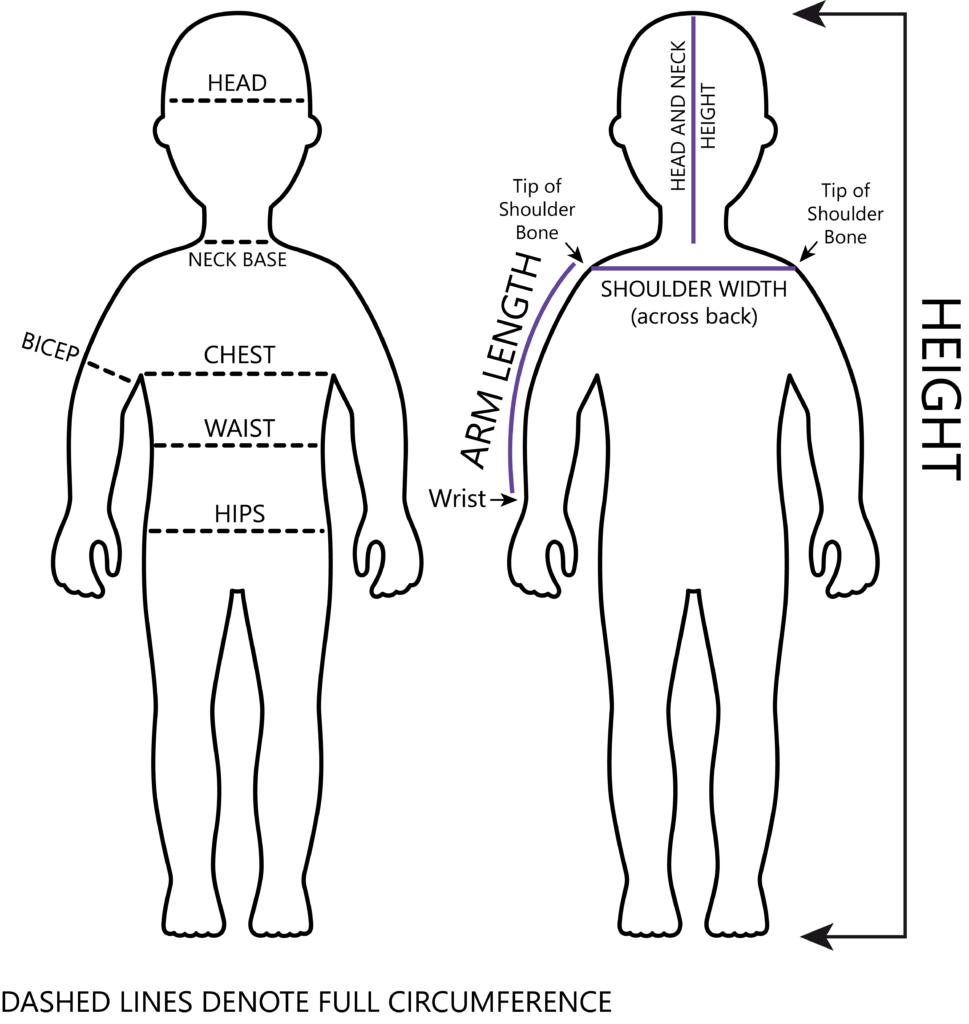How to Measure and Choose Size
One of the most wonderful things about sewing clothing is the ability to get a perfect fit!
In order to do so, it is necessary to take body measurements and compare them to the size chart, to help you choose the correct size.
All Goober Pea Designs clothing patterns provide a size chart, both on the listing and in the tutorial file. Here is a sample size chart for our unisex patterns for babies, children, and youth:

Important: DO NOT choose the size based on a child's age or the typical store bought size - pattern sizing is often different than store sizing. If you are making an item to sell, or as a gift for someone you can't measure, you can look up the size chart for a store clothing brand that you/they use often and use those measurements instead.
Here are a few tips to help you get accurate measurements:
- Double check that your tape measure is accurate. I once spent about a year making clothes that were a bit small on me, because I didn't realize my measuring tape had stretched out of shape. Most of the items I was making had a lot of stretch (I had recently discovered bamboo jersey, haha), so I didn't realize they were supposed to fit a bit more loosely.
- Measure over thin clothing or no clothing at all. Hold the tape so it is flush to the body but not tight.
- Follow the below diagram and directions to make sure you are measuring in the correct places. Note: Not all of these measurements will be required for all patterns - check the size chart for the specific pattern you are making to know which ones are necessary.

CHEST—taken around the entire circumference of the chest, right under the armpits. NOTE: Goober Pea Designs youth patterns are drafted for an UNDEVELOPED bust. The knit patterns can often work for a developing chest though—but be sure to measure the chest ABOVE THE BUST.
WAIST—taken around the entire circumference of the NATURAL waist, just under the ribs, where the body naturally hinges when you bend to the side (eg. “I’m a Little Teapot” - tip me over!)
HIPS—taken around the entire circumference of the widest part of the bum/hips.
BICEP—taken around the entire circumference of the widest part of the upper arm.
HEAD—taken around the entire circumference at the widest part of the head.
NECK BASE—taken around the entire circumferences of the widest part of the neck, at its base.
HEIGHT—from top of the head to bottom of the feet, when standing.
HEAD AND NECK HEIGHT—taken from the top of the head to the base of the neck, as a straight line (hold a ruler vertically beside the head).
ARM LENGTH—taken from the tip of the shoulder bone to the wrist.
SHOULDER WIDTH—taken from the tip of shoulder bone to the tip of the other shoulder bone, across the back.
One final note - in a lot of cases, measurements will not all fall into the same size - my own children are typically 1-2 sizes different between their chest and height. Goober Pea Designs provides detailed size blending instructions for all of our patterns, to help you get the best possible fit. If you ever have any issues following these instructions, please feel free to ask for assistance!
Also, sometimes different proportions will require further adjustments - for example, though my daughter's height measures a 5 currently, for tops I make her a 3 or 4 in length because she has a shorter torso and longer legs.
If you are using precious and/or expensive fabric, it's a good idea to make a muslin (a test sew from inexpensive fabric) before cutting into the good stuff. Solid colored fabrics are usually much less expensive than prints, and if your first comes out well, then you've got a great basic to add to the wardrobe!